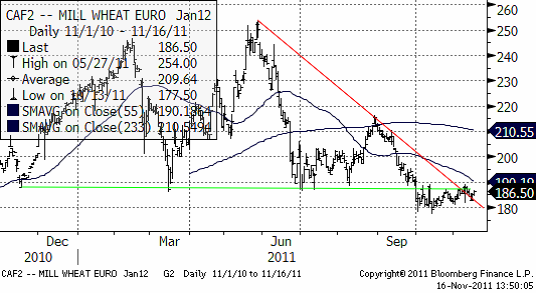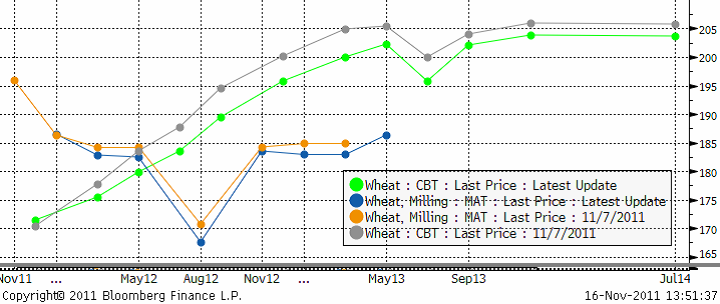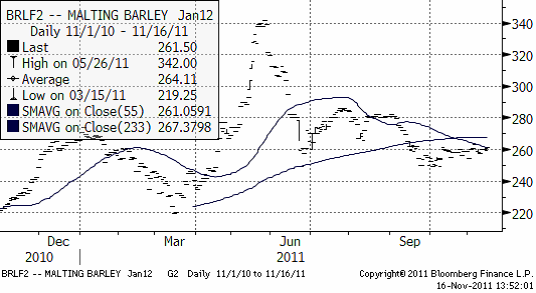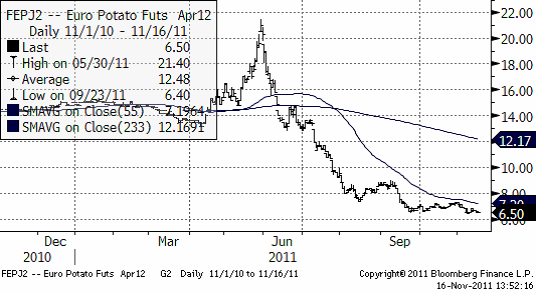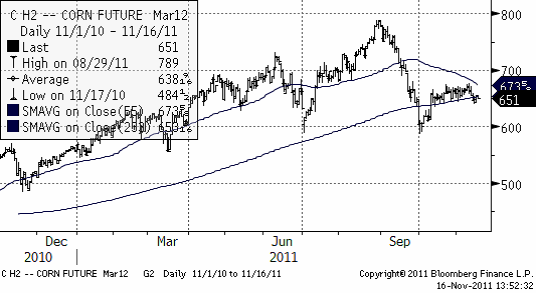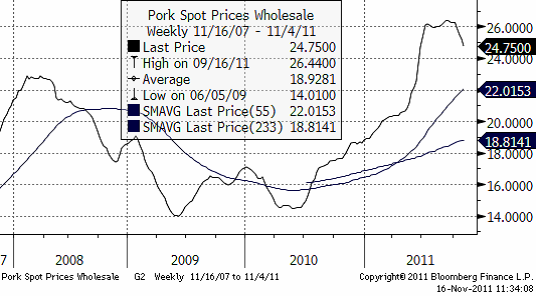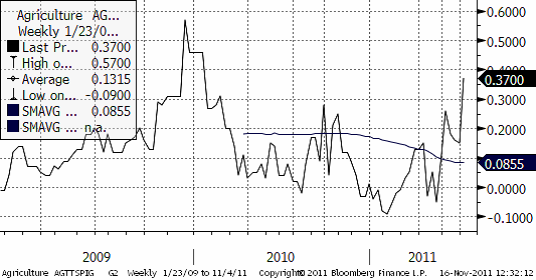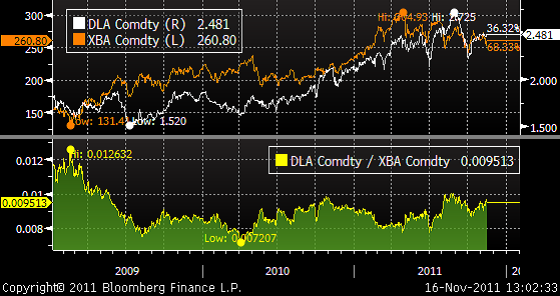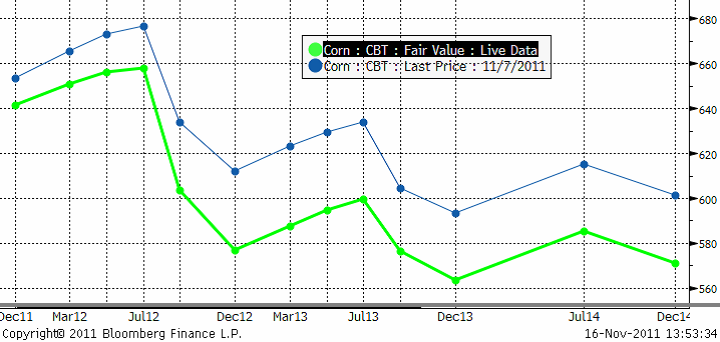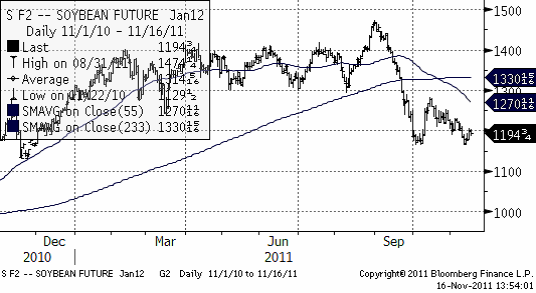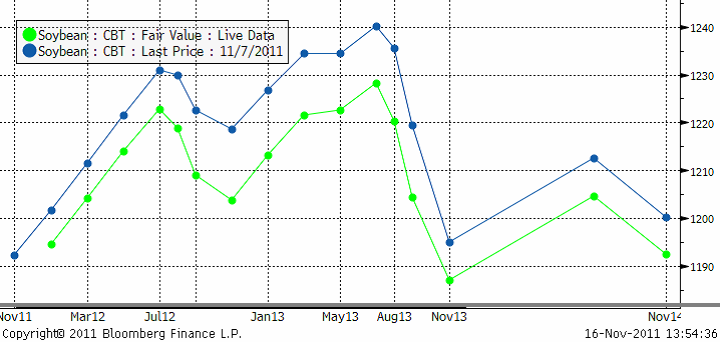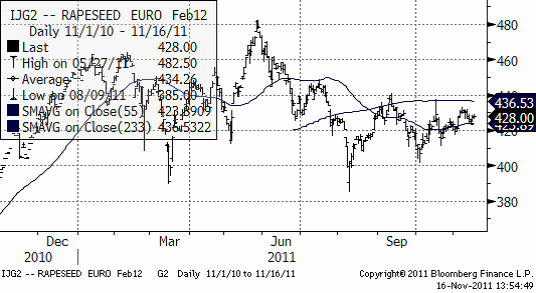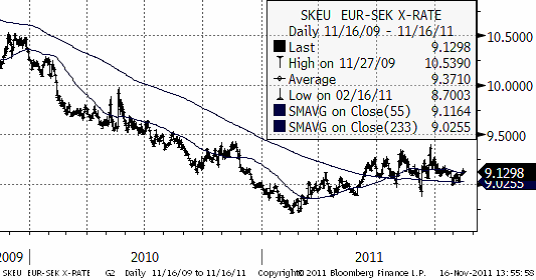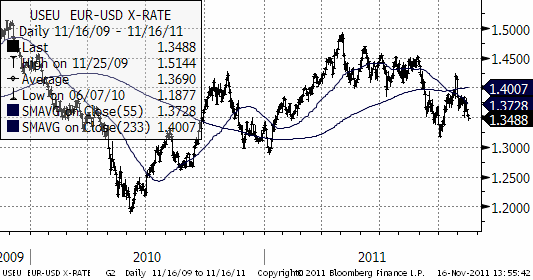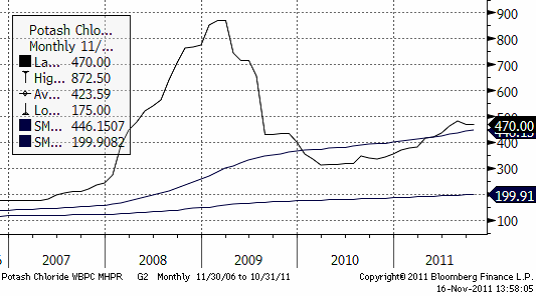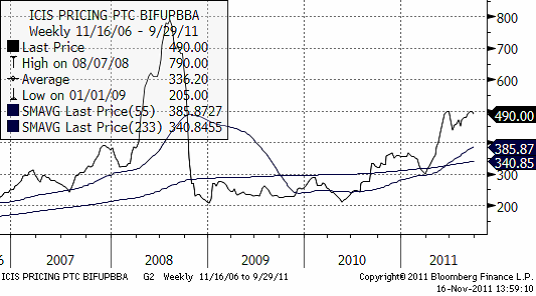Analys
SEB Jordbruksprodukter – Vecka 46
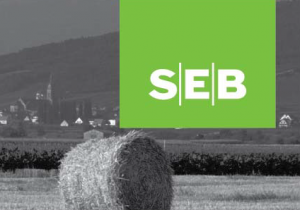 Marknaderna för jordbruksprodukter har hållit sig väldigt lugna den senaste veckan. Det är endast priset på potatis som rört sig, minus 9%. Däremot sker det saker i bakgrunden, framförallt på etanolmarknaden, men även på exportmarknaden för vete och inte minst, i ekonomin i stort.
Marknaderna för jordbruksprodukter har hållit sig väldigt lugna den senaste veckan. Det är endast priset på potatis som rört sig, minus 9%. Däremot sker det saker i bakgrunden, framförallt på etanolmarknaden, men även på exportmarknaden för vete och inte minst, i ekonomin i stort.
Att byta namn på premiärministrarna i Grekland och Italien skulle lösa några problem gick marknaden på i några minuter. Angela Merkels tyska CDU träffades i förrgår och det kom starka uttalanden därifrån om att hålla fast vid EU-projektet som det viktigaste för den här generationen.
Det är helt uppenbart att läxan från 1992 års uppgörelse med fasta växelkurser inte har fastnat. Läxan var att en för hög växelkurs som försvaras med allt högre räntor, leder till att räntorna slår ihjäl ekonomin i landet, vilket gör landet ännu mindre värt – dvs växelkursen borde vara ÄNNU lägre, och trycket på växelkursen blir ännu hårdare. Det är en spiral som endast kan ha flera lösningar, varav bankrutt är en av dem.
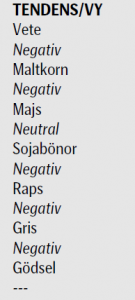 För några dagar sedan var räntan på italienska obligationer under 6%. Det var OK. Sedan gick räntan över och ligger nu på 7%. Förändringen av läge är som natt och dag. Länder som har så höga skulder byter spår i växeln från destination ”helt ok”, till destination ”bankrutt”.
För några dagar sedan var räntan på italienska obligationer under 6%. Det var OK. Sedan gick räntan över och ligger nu på 7%. Förändringen av läge är som natt och dag. Länder som har så höga skulder byter spår i växeln från destination ”helt ok”, till destination ”bankrutt”.
EU-politikernas lätthet att snacka om skuldavskrivning för Grekland, har gjort att allt fler inser att ”skuldavskrivning” är slutdestinationen för länder med för höga skulder, att klara sig. Skuldavskrivning gör att banker i Frankrike, Tyskland, med flera länder, får det svårt. Krisen flyttas norrut, eftersom bankernas skulder blir Frankrikes och Tysklands statsskulder. Därför steg räntorna på franska statsobligationer och belgiska, t ex, i tisdags.
Varför är det här av intresse i ett brev om jordbruksprodukter? Jo, därför att lagren av spannmål i Frankrike, som dessutom inte sjunker som de ska, blir allt dyrare att finansiera. Det contango som finns på Matif måste bort. Lagren måste likvideras.
Detta om inte ECB tillåts genomföra en europeiska version av det amerikanska QE2 – dvs att trycka pengar och pumpa in dem i ekonomin. I vilket, fall borde euron falla mot dollarn. Men väljer man inflationsvägen för att bli av med de ohanterligt stora statsskulderna får man en boom i råvarupriser och markpriser. Till den punkten är det nog ändå en tid kvar. Till dess blir det nog en orolig färd.
Vete
Terminspriset på Matif-vete håller sig alltjämt över den psykologiskt viktiga 180-euro-nivån, men orosmolnen hopar sig. Ryssland och Ukrainas återinträde på världsmarknaden spelar en stor roll nu. Dessa exportländers volymer påverkar i synnerhet europeiska länders exportmarknad, som är Mellanöstern och Nordafrika. Särskilt märks detta för Frankrike, som är ett av världens största exportländer när det gäller vete. Frankrike har hittills på säsongen förlorat mer än ett dussin av Egyptens tenders; Egypten är världens viktigaste importland med ca 9 mt som årlig importvolym. Vete från Ryssland, Ukraina och Kazakstan väller ut över marknaden. Egypten har de senaste 17 gångerna valt vete från Svartahavsregionen. Exporten från Rouen, som är Europas största export-hub, noterade den 2 november fyra månaders lägsta nivå. Franska myndigheter räknar med 23% lägre export i perioden juli 2011 – juni 2012, jämfört med förra året. Det blir då den lägsta nivån på 10 år. Egypten har endast stått för 4% av Frankrikes export utanför EU sedan juli, mot 18% förra året.
Algeriet är ett land som gärna har köpt franskt vete. Algeriet vann självständighet från Frankrike år 1962. Brödet man äter är baguetter och det franska vetet passar utmärkt för detta. Enligt FAO äter den genomsnittlige algeriern 212 kg vete om året, en klar andraplats i världsligan efter grannlandet Tunisien. Förra året gick 24% av Frankrikes export till Algeriet, som är världens näst största importland efter Egypten. Algeriet har hårda krav på insektsskador och svartahavsregionen drabbas ofta av sköldskinnbaggar (eurygaster integricepts), som suger ur sädeskornen. Därför kan Frankrike känna sig ganska säker än så länge där.
Rysslands skörd blir enligt USDA:s WASDE den tredje största på 10 år och erbjuder vete ca 10 dollar per ton under franska priser. Rysslands export påverkar främst, men inte bara Europa. Enligt USDA kommer USA:s export att minska med 24% till 26.5 mt den här säsongen. -24% är det största fallet på ett kvartssekel.
Nedan ser vi januarikontraktet på Matif. Den tekniska, dvs psykologiskt viktiga stödnivån på 180 euro utgår allt jämt ett starkt stöd. Vi bedömer ändå, med tanke på den minskning av konsumtion som lär komma i spåren av alla sparprogram i EU, och överväldigande bevis på att priset är för högt för att vinna exportordrar, att 180 euro lär brytas.
Nedan ser vi terminskurvan för Chicagovete och Matif nu och för en vecka sedan.
Allt talar för att Matif-vete faller ner i första hand till 150 – 160 – euro-nivån.
Maltkorn
Maltkornsmarknaden följer vetet och det finns inga speciella nyheter att rapportera. Tekniskt ligger priset under glidande medelvärden. Den tekniska trenden är alltså nedåtriktad.
Potatis
Priset på potatis av årets skörd har fallit med 9% den senaste veckan. Det är den enda råvara som rört sig mer än någon procentenhet.
Nedan ser vi kursdiagrammet på europeisk potatis, som handlas på Eurex; terminen avser leverans april nästa år.
Majs
Liksom på vetemarknaden, vinner Ryssland och Ukraina exportordrar. Igår köpte Japan 800,000 ton majs från Ukraina istället för att köpa den dyrare amerikanska produkten. Japan är världens största importör av majs, som används i djurhållningen.
Nedan ser vi marskontraktet på CBOT, där priset backat under 233-dagars glidande medelvärde, något av en negativ teknsisk signal.
Det händer intressanta saker i bakgrunden till majsmarknaden. För det första handlar det om amerikansk etanolproduktion och för det andra om kinesisk fläskkonsumtion. Vi ser priserna i yuan per kilo (senast 24.75 yuan) i diagrammet nedan – notera det stora prisfallet som just pågår (två glidande medelvärden är också inritade):
När det gäller etanol är det boom i USA. Firman Agtradertalk som sammanställer statistik visar följande nettovinst per gallon på att producera etanol, baserat på spotpriser FOB Illinois.
Nu är det så att det finns en skatterabatt på 45 cent per gallon i USA, som ges till den som blandar etanol i bensin. Den heter Volumetric Ethanol Excise Tax Credit och introducerades av George W Bush år 2004 och trädde i kraft 2005. Skatten syftade till att minska importberoendet av råolja, men kostar i dagsläget 5.7 miljarder dollar för skattebetalarna.
Etanol borde kosta 70% av bensin, eftersom etanol har ett energivärde som ligger på 70% av bensinens, men i diagrammet nedan ser vi att etanol nu kostar 95% av bensinen. DLA är kortnamnet för etanolterminer i dollar per gallon och bensin som handlas i cent per gallon, heter XBA.
Särskilt märkligt blir det höga priset när USA:s 209 destillerier producerar mer än vad som förbrukas i USA. USA exporterar etanol till Kanada, Europa och till och med till Brasilien! Brasiliens skörd av sockerrör blir i år 459.6 mt mot 501.2 förra året och den brasilianska regeringen har minskat inblandningen av etanol från 25 till 20%. Industrin producerar också mer socker och mindre etanol.
EU:s krav på etanolinblandning har också lett till brist. En gallon etanol kostar 3.21 dollar i Rotterdams hamn och 2.94 dollar i New Yorks hamn.
Situationen är intressant eftersom skatterabatten på 45 cent går ut vid årsskiftet. Det gjorde den även förra året, men då fick branschen en förlängning. En republikansk senator försökte i juni ta bort subventionen men förlaget gick nätt och jämt inte igenom. Samtidigt noterar jordbruksmark i USA rekordpriser, vilket väl är de enda fastighetspriserna i USA som inte kraschar. Markpriserna tog ett skutt uppåt 2004-2005 (gissa varför…).
Nedan ser aktuell terminskurva (grön) och för en vecka sedan (blå). Vi ser att tendensen till mer backwardation.
Sojabönor
Priset på sojabönor befinner sig i sjunkande trend. Vi har redan sett de sjunkande priserna på fläskkött i Kina. Å andra sidan, China National Grain & Oils Information Center släppte en rapport i förrgår där de menar att Kinas import av sojabönor för marknadsföringsåret 2011-12 kan öka med 7% till 56 mt.
Nedan ser vi terminskurvorna (nu, grön) och för en vecka sedan.
Det mest sannolika är nog ett test nedåt på sojabönorna, men fundamenta ger stöd just nu. Vi väntar oss nog ändå att säljarna kommer in – från Brasilien om inte annat – och säljer ner sojabönorna under stödet på 1167. På tre månaders sikt är vi negativa.
Raps
Rapspriset håller sig högt pga den svaga euron, inget annat. Raps är dyrt i förhållande till sojabönor och ”borde” falla ner mot 400 euro i första hand.
Gris
Tekniskt vilar priset på lean hogs på de glidande medelvärdena, vilket kan ge visst stöd. Test av dessa ger viktig information om rörelsen på kort sikt. Det falska brottet uppåt i oktober, ger en stark varning om att ”bulls” håller på att förlora kriget. Det är ganska vanligt att marknaden faller av kraftigt efter att den visat en falsk köpsignal. Ytterligare säljasignal ges när de glidande medelvärdena bryts. Just nu ger de glidande medelvärdena stöd. Nedan ser vi decemberkontraktet på CME, där priset fortsatt har varit i rekyl från den falska köpsignalen för två veckor sedan.
På en veckas sikt är vi negativa till lean hogs, men priset står och väger, ännu.
Valutor
EURSEK handlas i ett volatilt brett intervall. Det finns inga signaler att utläsa alls.
EURUSD tycks slutligen bryta nedåt. Det korta besöket över de glidande medelvärdena (som båda säjer ”sälj”), stärker den negativa vyn. All fundamenta talar för att euron ska falla och det ordentligt.
Tekniskt är läget en klar säljsignal. I första hand är nästa stöd 1.3145 dollar. I andra hand är det botten nere vid 1.2 dollar.
Gödsel
Kalium
Priset på kalium ligger kvar på samma nivå som för ett par veckor sedan.
Kväve
Nedan ser vi prisutvecklingen på Urea FOB Yuzhny i dollar per ton.
Fosfor
Nedan ser vi prisutvecklingen på Diammoniumfosfat FOB Baltic i dollar per ton.
[box]SEB Veckobrev Jordbruksprodukter är producerat av SEB Merchant Banking och publiceras i samarbete och med tillstånd på Råvarumarknaden.se[/box]
Disclaimer
The information in this document has been compiled by SEB Merchant Banking, a division within Skandinaviska Enskilda Banken AB (publ) (“SEB”).
Opinions contained in this report represent the bank’s present opinion only and are subject to change without notice. All information contained in this report has been compiled in good faith from sources believed to be reliable. However, no representation or warranty, expressed or implied, is made with respect to the completeness or accuracy of its contents and the information is not to be relied upon as authoritative. Anyone considering taking actions based upon the content of this document is urged to base his or her investment decisions upon such investigations as he or she deems necessary. This document is being provided as information only, and no specific actions are being solicited as a result of it; to the extent permitted by law, no liability whatsoever is accepted for any direct or consequential loss arising from use of this document or its contents.
About SEB
SEB is a public company incorporated in Stockholm, Sweden, with limited liability. It is a participant at major Nordic and other European Regulated Markets and Multilateral Trading Facilities (as well as some non-European equivalent markets) for trading in financial instruments, such as markets operated by NASDAQ OMX, NYSE Euronext, London Stock Exchange, Deutsche Börse, Swiss Exchanges, Turquoise and Chi-X. SEB is authorized and regulated by Finansinspektionen in Sweden; it is authorized and subject to limited regulation by the Financial Services Authority for the conduct of designated investment business in the UK, and is subject to the provisions of relevant regulators in all other jurisdictions where SEB conducts operations. SEB Merchant Banking. All rights reserved.
Analys
Brent crude ticks higher on tension, but market structure stays soft

Brent crude has climbed roughly USD 1.5-2 per barrel since Friday, yet falling USD 0.3 per barrel this mornig and currently trading near USD 67.25/bbl after yesterday’s climb. While the rally reflects short-term geopolitical tension, price action has been choppy, and crude remains locked in a broader range – caught between supply-side pressure and spot resilience.

Prices have been supported by renewed Ukrainian drone strikes targeting Russian infrastructure. Over the weekend, falling debris triggered a fire at the 20mtpa Kirishi refinery, following last week’s attack on the key Primorsk terminal.
Argus estimates that these attacks have halted ish 300 kbl/d of Russian refining capacity in August and September. While the market impact is limited for now, the action signals Kyiv’s growing willingness to disrupt oil flows – supporting a soft geopolitical floor under prices.
The political environment is shifting: the EU is reportedly considering sanctions on Indian and Chinese firms facilitating Russian crude flows, while the U.S. has so far held back – despite Bessent warning that any action from Washington depends on broader European participation. Senator Graham has also publicly criticized NATO members like Slovakia and Hungary for continuing Russian oil imports.
It’s worth noting that China and India remain the two largest buyers of Russian barrels since the invasion of Ukraine. While New Delhi has been hit with 50% secondary tariffs, Beijing has been spared so far.
Still, the broader supply/demand balance leans bearish. Futures markets reflect this: Brent’s prompt spread (gauge of near-term tightness) has narrowed to the current USD 0.42/bl, down from USD 0.96/bl two months ago, pointing to weakening backwardation.
This aligns with expectations for a record surplus in 2026, largely driven by the faster-than-anticipated return of OPEC+ barrels to market. OPEC+ is gathering in Vienna this week to begin revising member production capacity estimates – setting the stage for new output baselines from 2027. The group aims to agree on how to define “maximum sustainable capacity,” with a proposal expected by year-end.
While the IEA pegs OPEC+ capacity at 47.9 million barrels per day, actual output in August was only 42.4 million barrels per day. Disagreements over data and quota fairness (especially from Iraq and Nigeria) have already delayed this process. Angola even quit the group last year after being assigned a lower target than expected. It also remains unclear whether Russia and Iraq can regain earlier output levels due to infrastructure constraints.
Also, macro remains another key driver this week. A 25bp Fed rate cut is widely expected tomorrow (Wednesday), and commodities in general could benefit a potential cut.
Summing up: Brent crude continues to drift sideways, finding near-term support from geopolitics and refining strength. But with surplus building and market structure softening, the upside may remain capped.
Analys
Volatile but going nowhere. Brent crude circles USD 66 as market weighs surplus vs risk

Brent crude is essentially flat on the week, but after a volatile ride. Prices started Monday near USD 65.5/bl, climbed steadily to a mid-week high of USD 67.8/bl on Wednesday evening, before falling sharply – losing about USD 2/bl during Thursday’s session.

Brent is currently trading around USD 65.8/bl, right back where it began. The volatility reflects the market’s ongoing struggle to balance growing surplus risks against persistent geopolitical uncertainty and resilient refined product margins. Thursday’s slide snapped a three-day rally and came largely in response to a string of bearish signals, most notably from the IEA’s updated short-term outlook.
The IEA now projects record global oversupply in 2026, reinforcing concerns flagged earlier by the U.S. EIA, which already sees inventories building this quarter. The forecast comes just days after OPEC+ confirmed it will continue returning idle barrels to the market in October – albeit at a slower pace of +137,000 bl/d. While modest, the move underscores a steady push to reclaim market share and adds to supply-side pressure into year-end.
Thursday’s price drop also followed geopolitical incidences: Israeli airstrikes reportedly targeted Hamas leadership in Doha, while Russian drones crossed into Polish airspace – events that initially sent crude higher as traders covered short positions.
Yet, sentiment remains broadly cautious. Strong refining margins and low inventories at key pricing hubs like Europe continue to support the downside. Chinese stockpiling of discounted Russian barrels and tightness in refined product markets – especially diesel – are also lending support.
On the demand side, the IEA revised up its 2025 global demand growth forecast by 60,000 bl/d to 740,000 bl/d YoY, while leaving 2026 unchanged at 698,000 bl/d. Interestingly, the agency also signaled that its next long-term report could show global oil demand rising through 2050.
Meanwhile, OPEC offered a contrasting view in its latest Monthly Oil Market Report, maintaining expectations for a supply deficit both this year and next, even as its members raise output. The group kept its demand growth estimates for 2025 and 2026 unchanged at 1.29 million bl/d and 1.38 million bl/d, respectively.
We continue to watch whether the bearish supply outlook will outweigh geopolitical risk, and if Brent can continue to find support above USD 65/bl – a level increasingly seen as a soft floor for OPEC+ policy.
Analys
Waiting for the surplus while we worry about Israel and Qatar

Brent crude makes some gains as Israel’s attack on Hamas in Qatar rattles markets. Brent crude spiked to a high of USD 67.38/b yesterday as Israel made a strike on Hamas in Qatar. But it wasn’t able to hold on to that level and only closed up 0.6% in the end at USD 66.39/b. This morning it is starting on the up with a gain of 0.9% at USD 67/b. Still rattled by Israel’s attack on Hamas in Qatar yesterday. Brent is getting some help on the margin this morning with Asian equities higher and copper gaining half a percent. But the dark cloud of surplus ahead is nonetheless hanging over the market with Brent trading two dollar lower than last Tuesday.

Geopolitical risk premiums in oil rarely lasts long unless actual supply disruption kicks in. While Israel’s attack on Hamas in Qatar is shocking, the geopolitical risk lifting crude oil yesterday and this morning is unlikely to last very long as such geopolitical risk premiums usually do not last long unless real disruption kicks in.
US API data yesterday indicated a US crude and product stock build last week of 3.1 mb. The US API last evening released partial US oil inventory data indicating that US crude stocks rose 1.3 mb and middle distillates rose 1.5 mb while gasoline rose 0.3 mb. In total a bit more than 3 mb increase. US crude and product stocks usually rise around 1 mb per week this time of year. So US commercial crude and product stock rose 2 mb over the past week adjusted for the seasonal norm. Official and complete data are due today at 16:30.
A 2 mb/week seasonally adj. US stock build implies a 1 – 1.4 mb/d global surplus if it is persistent. Assume that if the global oil market is running a surplus then some 20% to 30% of that surplus ends up in US commercial inventories. A 2 mb seasonally adjusted inventory build equals 286 kb/d. Divide by 0.2 to 0.3 and we get an implied global surplus of 950 kb/d to 1430 kb/d. A 2 mb/week seasonally adjusted build in US oil inventories is close to noise unless it is a persistent pattern every week.
US IEA STEO oil report: Robust surplus ahead and Brent averaging USD 51/b in 2026. The US EIA yesterday released its monthly STEO oil report. It projected a large and persistent surplus ahead. It estimates a global surplus of 2.2 m/d from September to December this year. A 2.4 mb/d surplus in Q1-26 and an average surplus for 2026 of 1.6 mb/d resulting in an average Brent crude oil price of USD 51/b next year. And that includes an assumption where OPEC crude oil production only averages 27.8 mb/d in 2026 versus 27.0 mb/d in 2024 and 28.6 mb/d in August.
Brent will feel the bear-pressure once US/OECD stocks starts visible build. In the meanwhile the oil market sits waiting for this projected surplus to materialize in US and OECD inventories. Once they visibly starts to build on a consistent basis, then Brent crude will likely quickly lose altitude. And unless some unforeseen supply disruption kicks in, it is bound to happen.
US IEA STEO September report. In total not much different than it was in January
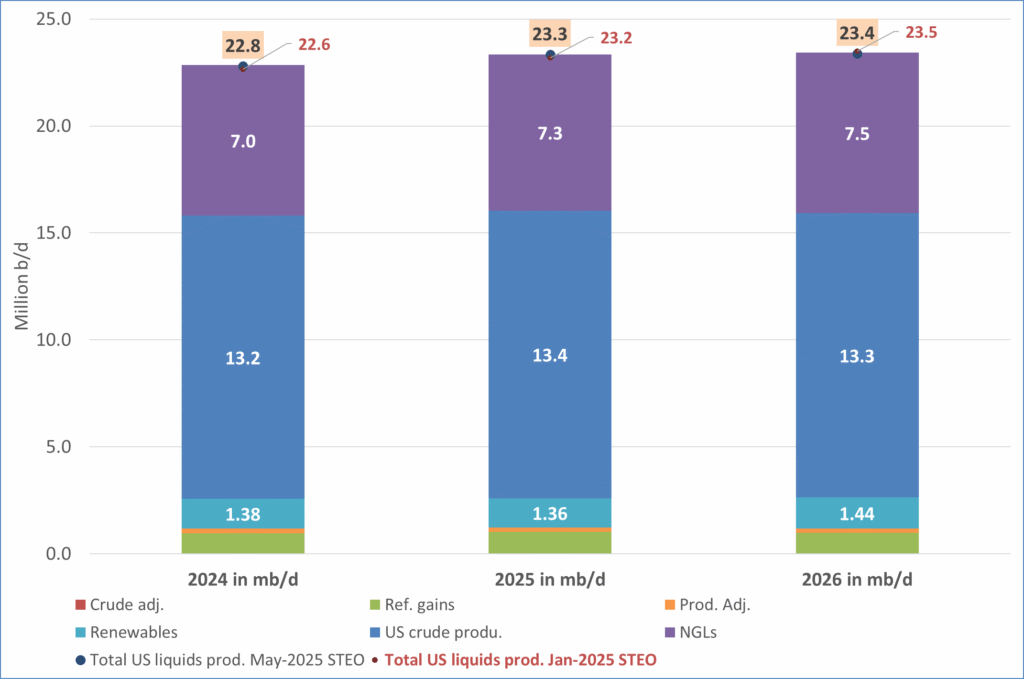
US IEA STEO September report. US crude oil production contracting in 2026, but NGLs still growing. Close to zero net liquids growth in total.

-

 Nyheter4 veckor sedan
Nyheter4 veckor sedanMeta bygger ett AI-datacenter på 5 GW och 2,25 GW gaskraftverk
-
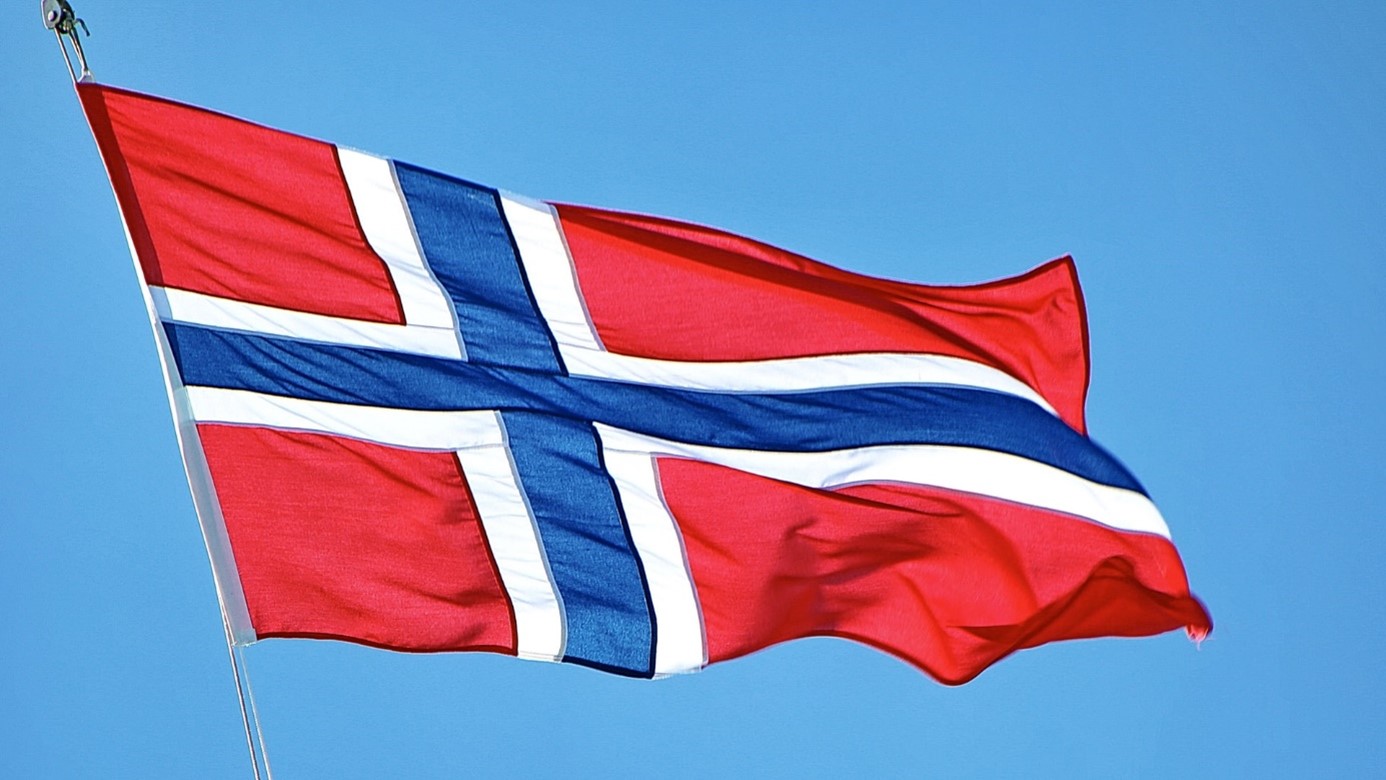
 Nyheter4 veckor sedan
Nyheter4 veckor sedanAker BP gör ett av Norges största oljefynd på ett decennium, stärker resurserna i Yggdrasilområdet
-

 Nyheter4 veckor sedan
Nyheter4 veckor sedanSommarens torka kan ge högre elpriser i höst
-

 Analys4 veckor sedan
Analys4 veckor sedanBrent edges higher as India–Russia oil trade draws U.S. ire and Powell takes the stage at Jackson Hole
-
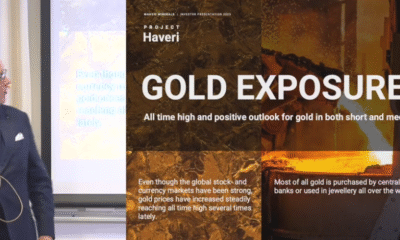
 Nyheter3 veckor sedan
Nyheter3 veckor sedanMahvie Minerals är verksamt i guldrikt område i Finland
-

 Analys3 veckor sedan
Analys3 veckor sedanIncreasing risk that OPEC+ will unwind the last 1.65 mb/d of cuts when they meet on 7 September
-

 Analys2 veckor sedan
Analys2 veckor sedanOPEC+ in a process of retaking market share
-

 Nyheter3 veckor sedan
Nyheter3 veckor sedanNeil Atkinson spår att priset på olja kommer att stiga till 70 USD


